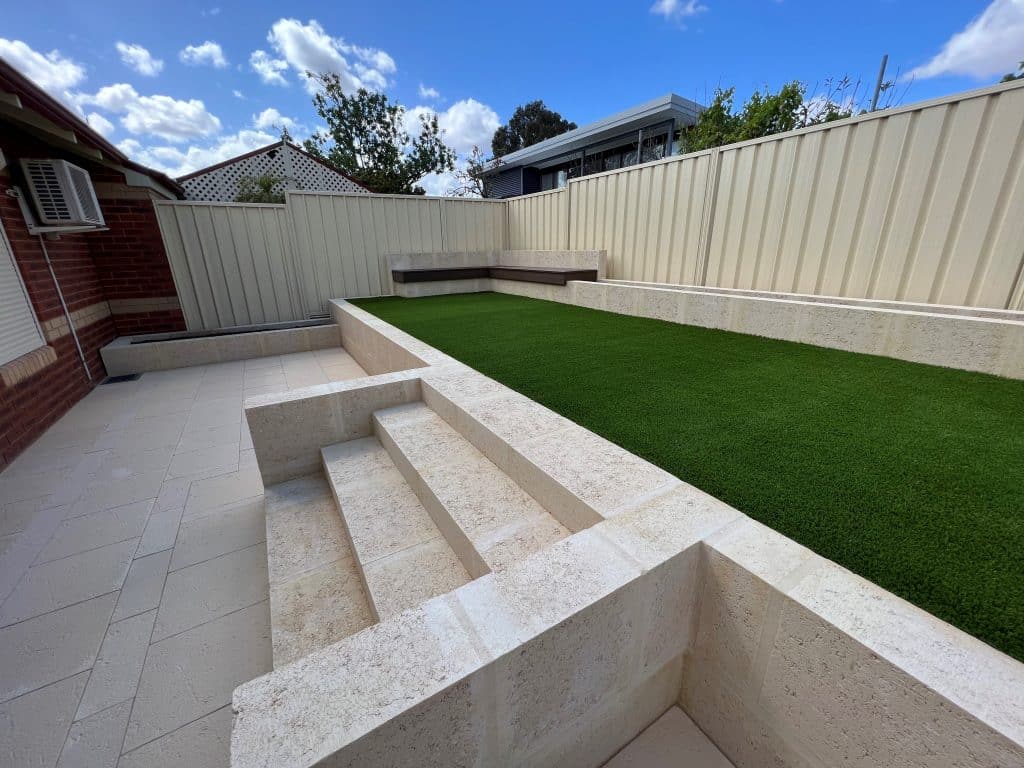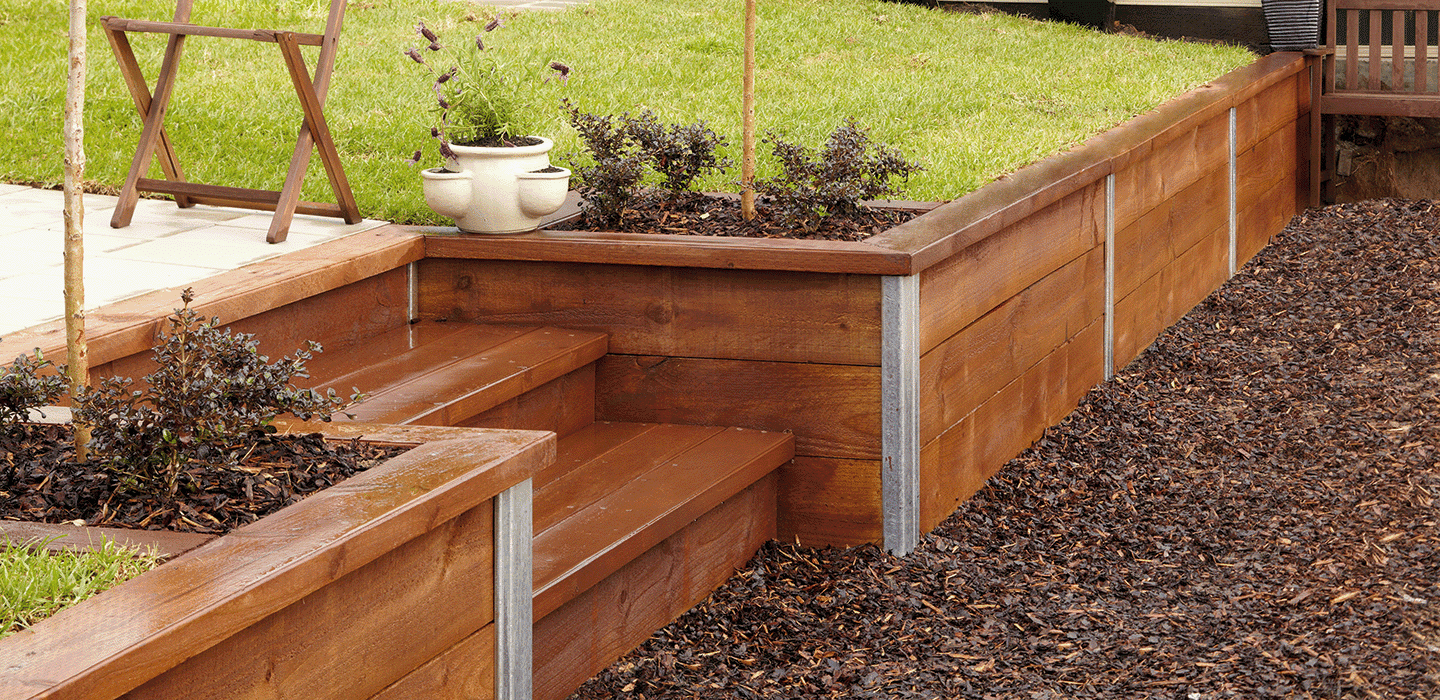Just How Custom-made Retaining Walls Sunshine Coast Can Improve Your Landscape Style
Just How Custom-made Retaining Walls Sunshine Coast Can Improve Your Landscape Style
Blog Article
Guaranteeing Structural Honesty: The Value of Properly Constructed Preserving Wall Surfaces in Protecting Against Incline Failure
In the realm of civil design and construction, the importance of effectively created preserving walls in preventing incline failing can not be underrated. By exploring the intricate interaction in between these aspects, a deeper understanding of the critical function that maintaining wall surfaces play in protecting architectural stability and avoiding incline failing emerges.
Duty of Retaining Walls in Stability
The necessity of retaining walls in making certain slope security is vital in civil engineering techniques. Keeping walls serve a critical role in avoiding soil disintegration, handling water runoff, and keeping the architectural honesty of inclines. By supporting vertical or near-vertical quality changes, keeping walls aid to redistribute side pressure exerted by the soil, consequently reducing the risk of incline failing.
One secret feature of maintaining wall surfaces is to counteract the force of gravity acting on the dirt mass behind them. This is achieved through proper layout and building, which takes into consideration elements such as soil type, wall surface height, drain stipulations, and possible additional charge tons. By efficiently retaining soil within defined boundaries, these structures help to stabilize slopes and avoid landslides.
Additionally, maintaining wall surfaces add to the aesthetic appeals of landscapes while supplying useful advantages. They can produce terraced degrees for landscaping, support streets or structures on hillsides, and boost the total usability of sloped terrain. Basically, retaining walls play an essential role in maintaining incline security and making sure the security and longevity of civil design tasks.
Variables Affecting Wall Efficiency
Elements that influence the performance of retaining walls include dirt residential or commercial properties, wall layout, and outside tons. Dirt homes play a vital role in establishing the stability and performance of a preserving wall. Factors such as soil kind, cohesion, inner friction angle, and groundwater conditions can impact how well a wall maintains the dirt behind it. The layout of the maintaining wall is an additional key variable that influences its effectiveness. Correct wall layout thinks about factors like wall elevation, wall surface type (e.g., gravity wall surfaces, cantilever walls), support products, water drainage systems, and building techniques to make sure the wall can hold up against the lateral stress applied by the retained dirt. In addition, external tons, such as surcharge tons from nearby frameworks or traffic, seismic pressures, and water stress, should be meticulously evaluated during the style and building and construction phases to ensure the wall surface can appropriately stand up to these exterior forces. By thinking about these elements comprehensively, engineers can create preserving walls that efficiently protect against slope failure and guarantee lasting architectural integrity.
Design Factors To Consider for Keeping Wall Surfaces
Including the important facets of soil residential properties and outside loads right into the structural layout procedure is necessary for developing efficient keeping wall surfaces that ensure slope stability. When developing retaining walls, designers need to thoroughly examine the qualities of the surrounding dirt, including its drain, kind, and compaction residential properties. Recognizing these dirt properties is vital for determining the appropriate wall thickness, reinforcement, and height needed to endure the lateral stress applied by the soil mass.
Moreover, external lots such as additional charge lots from neighboring frameworks or traffic, as well as seismic forces, need to be recommended you read taken into account during the design stage. These lots can substantially affect the stability and performance of a retaining wall surface, demanding the use of correct style techniques and products to reduce prospective failure risks.
Furthermore, the option of appropriate materials, such as concrete, rock, or timber, need to align with the site-specific conditions and aesthetic demands. Aspect of safety considerations, drain provisions, and building techniques are additionally vital elements that affect the total design and functionality of retaining walls in protecting against slope failing. By thoroughly thinking about these design factors to consider, designers can guarantee the structural stability and long-term stability of retaining wall surfaces.

Building Best Practices for Resilience
When constructing retaining wall surfaces for optimal sturdiness and longevity, adherence to industry-standard methods and careful interest to detail are extremely important. To make sure the sturdiness of a retaining wall, appropriate website preparation is important.
Including reinforcement methods, such as geogrids or steel bars, can enhance the architectural honesty of the retaining wall surface and protect against potential failings. Appropriate backfilling treatments, consisting of compaction and drain considerations, are additionally essential for the wall surface's sturdiness. Normal maintenance and evaluations are suggested to attend to any signs of wear, erosion, or structural problems promptly. By following these building best methods, keeping wall surfaces can hold up against the examination of time and successfully stop slope failure.
Relevance of Proper Upkeep
Regular maintenance is necessary for protecting the structural stability and performance of keeping walls over time. To make sure that keeping walls continue to perform their desired feature efficiently, regular inspections ought to be performed to identify any type of indicators of wear and tear.

Verdict
Finally, maintaining wall surfaces play an essential duty in making sure structural honesty and stopping slope failure. By taking into consideration variables influencing wall effectiveness, adhering to create factors to consider, adhering to construction ideal practices, and carrying out correct upkeep, the toughness of maintaining walls can be maximized. Retaining Walls Sunshine click Coast. It is necessary to identify the importance of effectively constructed preserving wall surfaces in keeping security and avoiding possible threats related to incline failing
Elements that influence the performance of keeping wall surfaces include dirt buildings, wall design, and outside lots. Appropriate wall surface my site layout considers aspects like wall height, wall surface type (e.g., gravity walls, cantilever wall surfaces), support materials, water drainage systems, and building methods to ensure the wall surface can hold up against the side stress exerted by the kept soil. By thinking about these variables adequately, engineers can build maintaining wall surfaces that effectively prevent incline failing and make sure long-lasting architectural stability.
Upkeep jobs may include clearing drain systems to avoid water accumulation behind the wall, fixing any visible splits or damages, and making sure that the wall surface is free from vegetation that might exert stress on the structure. By taking into consideration variables affecting wall efficiency, adhering to create factors to consider, following building best methods, and implementing correct upkeep, the resilience of maintaining walls can be optimized.
Report this page